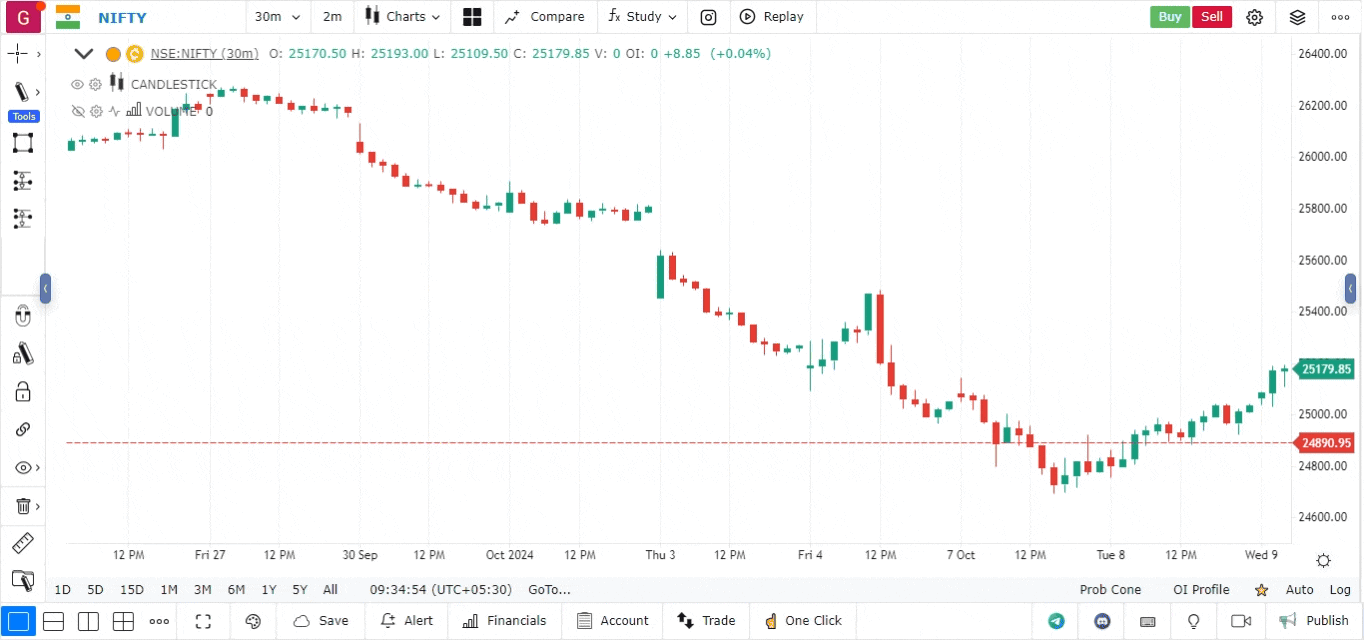Elliott Impulse Wave
The Elliott Impulse Wave is a fundamental component of the Elliott Wave Theory, which is used in technical analysis to describe and forecast market trends. An Impulse Wave consists of five waves that move in the direction of the larger trend. It is commonly used by traders to identify the market’s current trend and predict potential reversals.
Characteristics of Elliott Impulse Wave
The Impulse Wave structure includes five waves, labeled as 1, 2, 3, 4, and 5, with waves 1, 3, and 5 moving in the direction of the primary trend (upward or downward), while waves 2 and 4 are corrective and move against it. Here’s a breakdown of each wave:
- Wave 1: The initial movement in the direction of the trend. It’s often difficult to identify this wave until the following waves confirm the impulse.
- Wave 2: A corrective wave that retraces a portion of Wave 1’s movement, typically up to 50-61.8% based on Fibonacci retracement levels. Wave 2 cannot retrace more than 100% of Wave 1.
- Wave 3: The strongest and longest wave in the sequence. This wave tends to extend much further than Wave 1, often reaching 161.8% of Wave 1’s length.
- Wave 4: Another corrective wave that moves against the trend but does not overlap with the price territory of Wave 1. It usually retraces 38.2-50% of Wave 3.
- Wave 5: The final wave in the impulse sequence, which moves in the direction of the trend. It is typically less powerful than Wave 3 and completes the pattern, often followed by a more significant market correction.
Elliott Impulse Wave Rules
For a valid Elliott Impulse Wave, the following rules must be followed:
- Wave 2 cannot retrace more than 100% of Wave 1.
- Wave 3 must always be longer than Wave 1 and cannot be the shortest wave among Waves 1, 3, and 5.
- Wave 4 must not overlap the price territory of Wave 1, except in specific market conditions (like diagonal triangles).
How to Identify Elliott Impulse Waves
Here’s how to use the Elliott Impulse Wave drawing tool:
-
Load the Chart:
- Open the platform and select the asset you want to analyze.
- Ensure that your chart is set to a candlestick view for a clearer analysis of price movements.
-
Access the Drawing Tools:
- Click on the drawing tools menu, which is typically found on the left-hand side of the chart interface.
- Look for the Elliott Wave tools in the drawing tool section.
-
Select the Impulse Wave Tool:
- Choose the Elliott Impulse Wave tool from the list of available drawing tools.
- This tool will allow you to mark the points on the chart that represent the waves of the impulse pattern.
-
Plot the Impulse Wave:
- Start by marking the beginning of Wave 1 on the chart.
- Continue to plot each point sequentially to mark Waves 2, 3, 4, and 5 based on the market’s price action.
- Ensure that each wave follows the rules of Elliott Wave Theory for a valid Impulse Wave pattern.
-
Analyze the Pattern:
- Once you have plotted all five waves, review the structure to ensure that it aligns with the rules and guidelines of Elliott Impulse Waves.
- Use the pattern to identify potential reversal points or to forecast the next market move.
